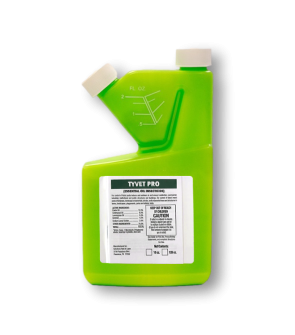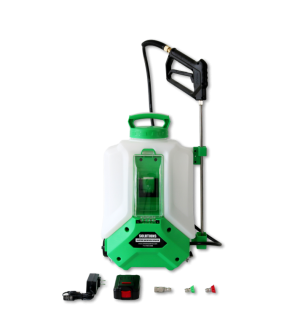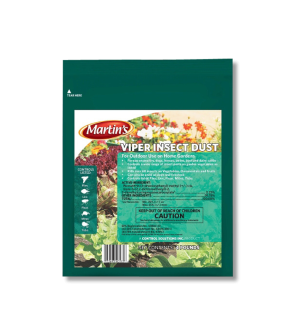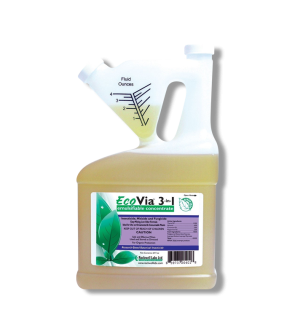Gain access to personalized product screening, the best pricing, rewards, and more!
Most Effective Products
Squash Bug Control: How to Get Rid of Squash Bugs
This page is a general squash bug control guide. Using the products and methods suggested, you will get control of squash bugs. Follow this guide and use the recommended products, and we guarantee 100% control over squash bugs.
One of the most frustrating garden pests for homeowners and gardeners is squash bugs. These true bugs, commonly called leaf-footed bugs, may look similar to stink bugs but are actually a different pest species and should not be confused with each other.
Squash bugs feed by sucking the sap from plants, which causes the leaves to yellow, wilt, and develop leaf scorch. This damage not only looks ugly but seriously weakens the plant’s ability to photosynthesize and produce healthy fruit. Over time, a heavy infestation can stunt plant growth and drastically lower yields, sometimes killing the plant altogether.
Because squash bugs can produce multiple generations in a single growing season, an unchecked population can quickly overwhelm your garden, making early detection and control vital. Luckily, there are several methods that can save gardens and protect homes from squash bugs with the following tips and products in our DIY guide.
Identification
Before you can proceed with a treatment program, you must be sure that your pest is indeed a squash bug. Misidentification can lead you to use the wrong treatment products and waste time and money. Listed below are common characteristics to know what squash bugs look like:

- Squash bugs are a shield-shaped insect that resembles a stink bug, but is slightly larger at 1/2 to 3/4 inches long, more elongated, and gray rather than green. They are also black in color, often displaying orange or brown stripes along the edges of the abdomen. Their wings lie flat and form an X shape when folded across the back.
- Newly hatched nymphs have light green abdomens with red heads and thoraxes, which darken over time, and they possess black legs and antennae. As they mature through several stages, nymphs develop soft, light gray bodies while retaining their dark legs and antennae.
- Squash bug eggs are reddish-brown, about one-sixteenth of an inch in size, and are usually laid in diamond-shaped clusters on the underside of leaves.
Use the description and image above to determine whether the pest you encounter is a squash bug. If you are unsure, contact our experts; we will help you identify the correct one.
Inspection
Once the squash bug has been properly identified, you need to know the items and areas where the pest is harboring. During the inspection, you will focus your search on finding these areas where their appearance is more likely. This information will help you know where to apply pesticides.

Where to Inspect
Squash bugs are commonly found in gardens and agricultural fields where cucurbit crops such as squash, zucchini, pumpkins, melons, and cucumbers grow.
In the fall, these pests will survive the winter by hiding in sheltered spots like beneath leaves, soil clumps, rocks, wood piles, plant debris, and wood.
Squash bugs do not typically come inside homes, but they can accidentally wander indoors during the fall in search of places to overwinter.
If they do come indoors, they will seek cool, dark, and undisturbed places like basements, garages, crawl spaces, or cracks and crevices around window and door frames.
What to Look For
From late May to early June, squash bugs will become active and feed on plants. Much like stink bugs, squash bugs will emit a foul odor when crushed or disturbed as a defense mechanism.
They tend to gather on the leaves and stems of host plants, especially on the undersides of leaves and near the base of the plant.
Their feeding results in yellow spots on leaves that eventually turn brown, and in severe cases, plants begin to wilt, collapse, and die a condition known as Anasa wilt. The affected areas often become black and brittle.
You may also notice scarring or sunken areas on fruit, especially on the undersides where the bugs often hide and feed. Young fruit may become misshapen or abort before maturing. In humid conditions, feeding wounds can invite secondary infections, leading to fruit rot or decay on crops, both in the field and after harvest.
A more serious sign is when plants turn yellow and die suddenly, which may indicate infection with Cucurbit Yellow Vine Disease, which is transmitted by squash bugs.
Treatment
Before you begin any type of pesticide application, you will need to wear the appropriate personal protective equipment (PPE) when mixing and spraying pesticides.
To get rid of squash bugs effectively, a combination of pruning and pesticide applications should be used.
To prevent overwintering, it would be best to make applications during November and late May to early June.
The best time to begin squash bug control is early spring, as soon as the plants start growing or just before the squash bugs become active. This is typically around April to May in most regions, depending on your local climate.
Starting early helps you catch and manage squash bugs before they lay eggs and their populations build up.
Step 1: Prune

First, inspect your plants frequently, especially the undersides of leaves, for eggs and nymphs.
Pruning can help by improving air circulation and reducing hiding spots for squash bugs. Trim away dense foliage and remove any damaged or heavily infested leaves to expose bugs and make it easier to spot and remove them.
Gently scrape off any egg clusters you see into a bucket of soapy water.
Step 2: Apply EcoVia 3-in-1 Natural Insecticide to Crops

This product will need to be mixed with water or oil in a backpack sprayer, mist blower, compressed air sprayer, power sprayer, ULV fogger, mechanical aerosol misting/fogging equipment, or other conventional application equipment.
For broader and easier applications, we suggest using the Solutions Electric Backpack Sprayer.
A general application on crops will use 1 fl. oz. of EcoVia 3-in-1 Natural Insecticide per 1 gallon of water.
To mix, fill the sprayer with half the amount of water or oil, add the proper amount of product, and pour in the remaining water or oil. Close the tank lid and agitate well until the solution is mixed. A milky white appearance will show once the product is diluted.
Spray the top and bottom of leaves until wet, but not to the point of runoff.
Plants known to be sensitive to this product include basil, evergreens, maple trees, and other species that are prone to damage from horticultural oils like 435 oil. These plants may experience leaf burn or other forms of phytotoxicity, so avoid applying the product to them or test on a small area first before full application.
If unsure, test a small area and observe for results after 48 hours of application.
This product is labeled for use on a wide range of crop sites, including cannabis (where cultivation is legally permitted), edible plants, fruit-bearing plants and trees, vineyards, cotton, lumber, and other cultivated commodities. It is also suitable for organic production, making it a flexible option for growers following organic practices.
Step 3: Create Perimeter Application with Tyvet Pro

Tyvet Pro is a natural, broad-spectrum insecticide concentrate that controls and repels pests in and around residential, commercial, and industrial areas.
Keep in mind that squash bugs are not specifically listed on the label, but you will see true bugs, which this pest is considered.
This product will need to be mixed with water in a handheld pump, backpack sprayer, or fogger.
For outdoor perimeter treatments around structures, apply 1.5 to 3 fl. oz. of Tyvet Pro per 1 gallon of water per 1,000 sq. ft.
Treat around your home’s foundation, door frames, windows, eaves, and any cracks or gaps where bugs might enter. Then apply around your structure’s perimeter by spraying 3 feet up the foundation and at most 10 feet out.
On sensitive surfaces such as flat painted surfaces, plastics, fabrics, vinyl and wood floors, make an application to an inconspicuous area before making more comprehensive treatments to test for damage or staining.
Keep people and pets away from the treatment area until the spray has dried.
Prevention
Once you have eliminated squash bugs, you will need to ensure these pests do not return. Here are some preventative measures we suggest following to keep squash bugs away.
- Start by keeping your garden and crop site clean and free of plant debris. Remove fallen fruit and plant debris, and gather vegetables and fruit as soon as its ready.
- Preventing squash bugs starts with early and consistent garden care. Planting crops early in the season allows foliage to mature before squash bugs become active. Avoid planting crops in the same site each year to avoid pests overwintering in the soil.
- Early in the season, cover young plants with row covers to prevent adult bugs from laying eggs. Be sure to remove the covers once flowers bloom to allow pollination.
- Tilling the soil in fall or early spring exposes squash bugs and their eggs to predators and harsh weather, reducing their numbers. It also helps break down plant debris that can harbor pests.
- If infestations occur, reapply EcoVia 3-in-1 Natural Insecticide on crops and Tyvet Pro around the perimeter of homes as needed. EcoVia 3-in-1 Natural Insecticide may be reapplied in 24-hour intervals until pest activity has reduced to desired levels of control.
Key Takeaways
What are Squash Bugs?
- Squash bugs are pests that feed on cucurbit plants by sucking their sap, causing leaves to wilt and damage to the fruit. They are tough, grayish-brown bugs that often hide on the undersides of leaves and lay copper-colored eggs in clusters.
How to Get Rid of Squash Bugs
- To get rid of squash bugs, a combination of pruning, EcoVia 3-in-1 Natural Insecticide, and Tyvet Pro is recommended.
Preventing Squash Bug Reinfestations
- Preventing squash bugs involves keeping the garden clean, rotating crops, using row covers early in the season, and tilling the soil in the fall or spring to disturb pests. If reinfestations occur, insecticides like EcoVia 3-in-1 Natural Insecticide and perimeter treatments such as Tyvet Pro can be applied to control them.













